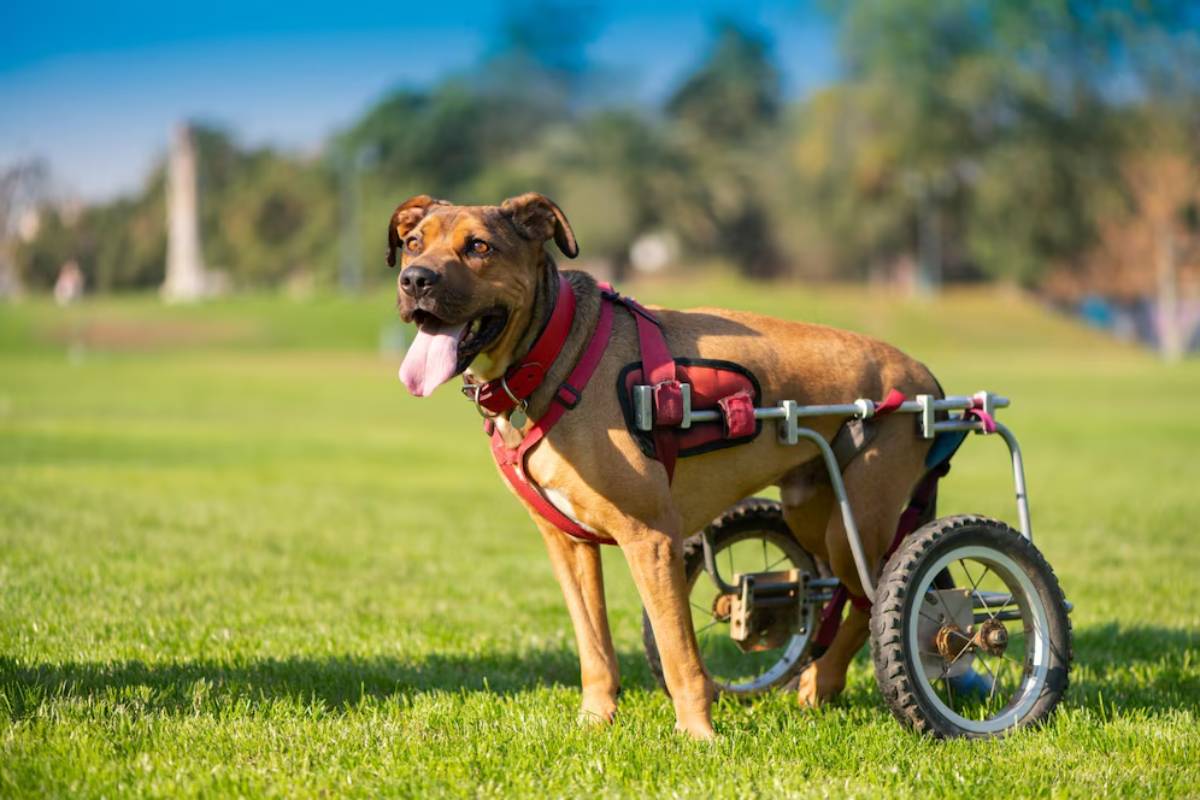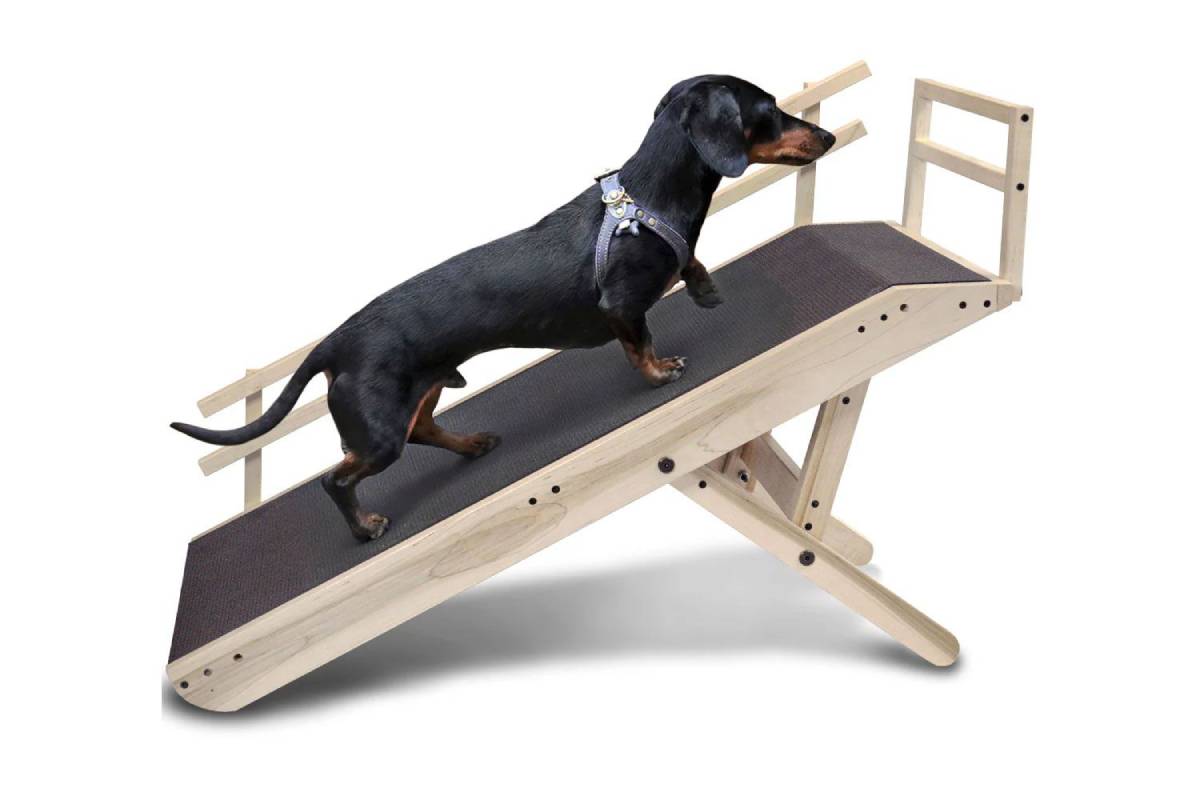
Best Mobility Aids for Senior Dogs and Cats
Senior pets often experience mobility issues as they get older. Joint pain, arthritis and decreased agility can also plague senior dogs and cats. Fortunately, some mobility aids can keep our furry friends comfortable. The Ultimate Guide To Mobility Aids For Senior Pets: Pet Ramps and arthritis support
Why Mobility Aids Matter for Senior Pets
Mobility Assistance Devices for Older Pets Older dogs may also develop arthritis, hip dysplasia or muscle weakening, which restricts their ability to move. These problems can impact their physical health and mental well-being. People with limited mobility might not have the opportunity to engage and connect with their world.
The right mobility assisters can also make life easier for a senior pet. They facilitate movement, decrease pain, and enable pets to stay active. As a bonus, such aids help prevent injuries, such as falls or strains, all too common in older pets. Investing in mobility tools allows your senior pets to enjoy their golden years.
Key Benefits of Mobility Aids for Senior Dogs and Cats
Enhanced Comfort and Independence
Senior pets benefit from the comfort and independence that mobility aids bring. Pet ramps, for instance, assist pets in getting on furniture and into cars or other elevated places without jumping. This is especially beneficial for arthritic pets.
Arthritis support products such as harnesses and orthopaedic beds relieve pressure on aching joints. They facilitate better sleeping, and minimise stress on the joints, allowing them to get up easily with dignity.

Prevention of Further Health Issues
Mobility aids also prevent further health issues. They reduce strain on joints and muscles, helping avoid worsened conditions like arthritis. For example, using a ramp instead of letting a dog jump into a car can lower joint stress and reduce injury risk.
These aids also encourage gentle exercise, which helps manage weight. Maintaining a healthy weight reduces strain on joints. Regular movement can improve circulation and overall health.
Improved Mental Well-being
Mobility aids can boost a pet’s mental well-being. Senior pets may feel anxious or depressed when they can’t move freely. This limits their ability to engage in activities they enjoy. By enabling easier movement, mobility aids keep pets mentally stimulated and engaged.
For instance, a ramp can help a cat reach their favourite perch, while a harness allows a dog to join family walks. These activities are vital for a pet’s happiness.
Popular Mobility Aids for Senior Dogs and Cats

Pet Ramps for Older Pets
Pet ramps rank among the top mobility aids for senior pets. They come in various sizes and materials, making them suitable for different uses. Consider the following factors when choosing a ramp:
- Material: Select ramps made of wood, plastic, or metal that are durable and easy to clean.
- Surface: Look for a non-slip surface to prevent accidents.
- Weight Capacity: Ensure the ramp can support your pet’s weight.
- Adjustability: Some ramps can adjust to fit your pet’s needs.
Pet ramps are especially helpful for dogs with arthritis or hip dysplasia, as they prevent jumping and reduce joint strain.
Arthritis Support for Pets
Arthritis is common in senior pets, and the right support can make a difference. Here are some options for arthritis support:
- Orthopaedic Beds: These beds offer extra support for sore joints, helping pets rest comfortably.
- Joint Supplements: Glucosamine and chondroitin can help maintain joint health and reduce inflammation.
- Supportive Harnesses: Harnesses with handles help owners assist pets in standing or walking, lowering fall risk.
Using these aids can help manage arthritis symptoms and improve your pet’s quality of life.
Other Mobility Aids
Besides ramps and arthritis support, several other aids can help senior pets:
- Stairs: Pet stairs can assist pets in reaching higher surfaces.
- Slings: Slings provide support for pets with weak hind legs.
- Boots: Protective boots offer traction on slippery surfaces and safeguard sensitive paws.
Expert Tips & Common Mistakes to Avoid
Best Practices for Using Mobility Aids
To ensure mobility aids work well, follow these best practices:
- Gradual Introduction: Introduce new aids slowly, allowing your pet to adjust. Use treats and praise to create positive associations.
- Regular Maintenance: Keep mobility aids clean and in good condition for safety.
- Consult a Vet: Always check with your veterinarian before introducing new aids, especially if your pet has health concerns.
Common Mistakes and Misconceptions
Here are some common mistakes pet owners make:
- Ignoring Weight Management: While mobility aids help, maintaining a healthy weight is essential to reduce joint strain.
- Overlooking Regular Check-ups: Regular vet check-ups are vital for monitoring health and adjusting care plans.
- Assuming All Aids Are the Same: Not every mobility aid suits every pet. Choose aids tailored to your pet’s size and condition.
Insights and Recommendations
Tailoring Mobility Aids to Individual Needs
Each senior pet is unique, and their mobility needs will vary. Consider the following when selecting aids:
- Customisation: Some aids can be tailored, like adjustable ramps or specialised orthopaedic beds.
- Combination of Aids: You may need different aids to tackle various mobility challenges.
- Monitoring and Adjustment: Regularly check your pet’s response to the aids and adjust as needed.
Exploring Innovative Solutions
New mobility solutions are emerging as technology advances. Watch for:
- Electric Lifts: These help larger dogs access vehicles or elevated surfaces.
- Wearable Technology: Devices that track activity levels and mobility patterns.
- Rehabilitation Therapies: Hydrotherapy and physiotherapy can strengthen muscles and improve joint function.
Helping Senior Pets Live Their Best Life
In conclusion, mobility aids are crucial for improving the quality of life of senior pets. These aids allow for comfort and independence, from ramps to arthritis support. By understanding what your pet needs and choosing the right aids to suit them, you can help them enjoy their golden years.
If you have an older pet, consider mobility aids there and speak to your veterinarian to develop a care plan. There is no better investment than the investment you make in the mobility of your pet.
Do you have an older pet who has benefited from mobility aids? Share your experiences in the comments below. Together, we can help more pets live their best lives.


